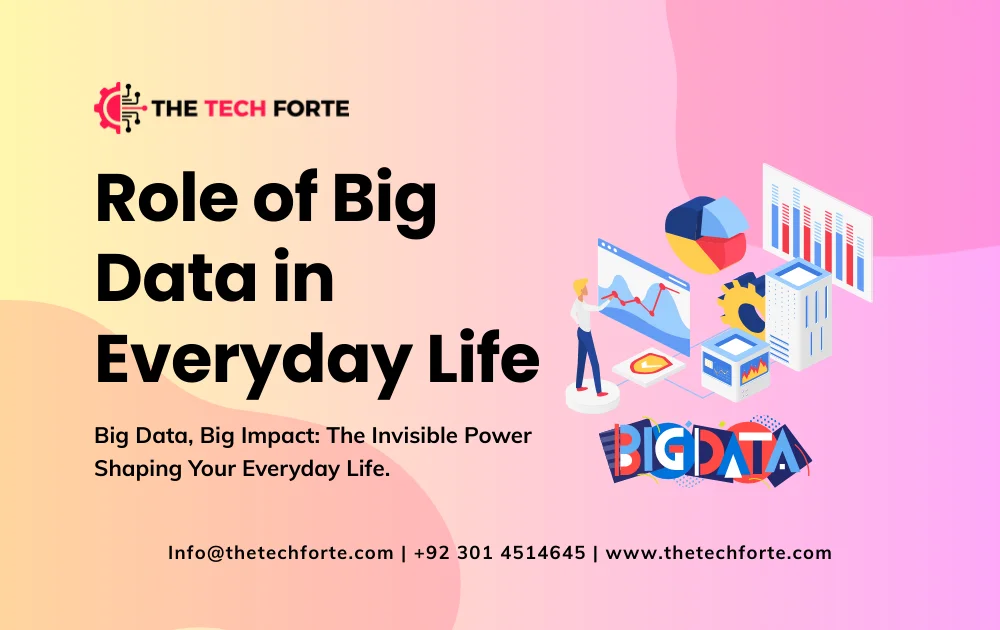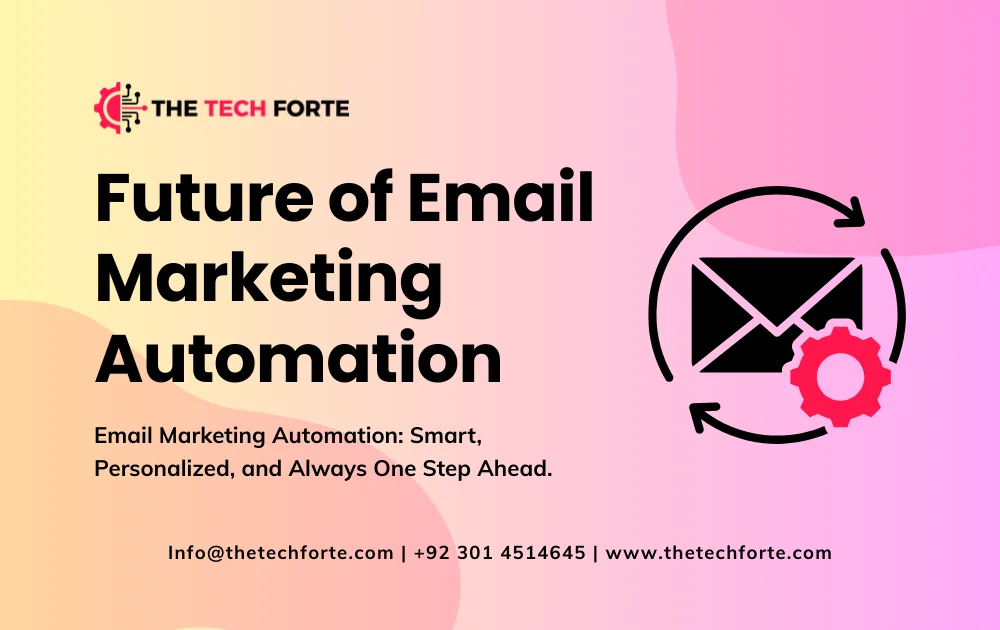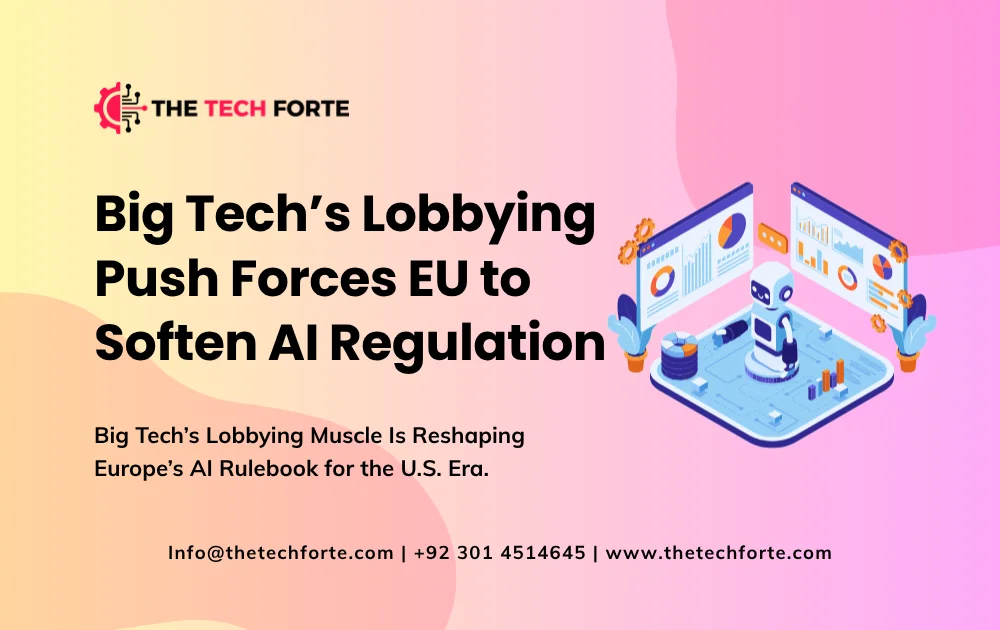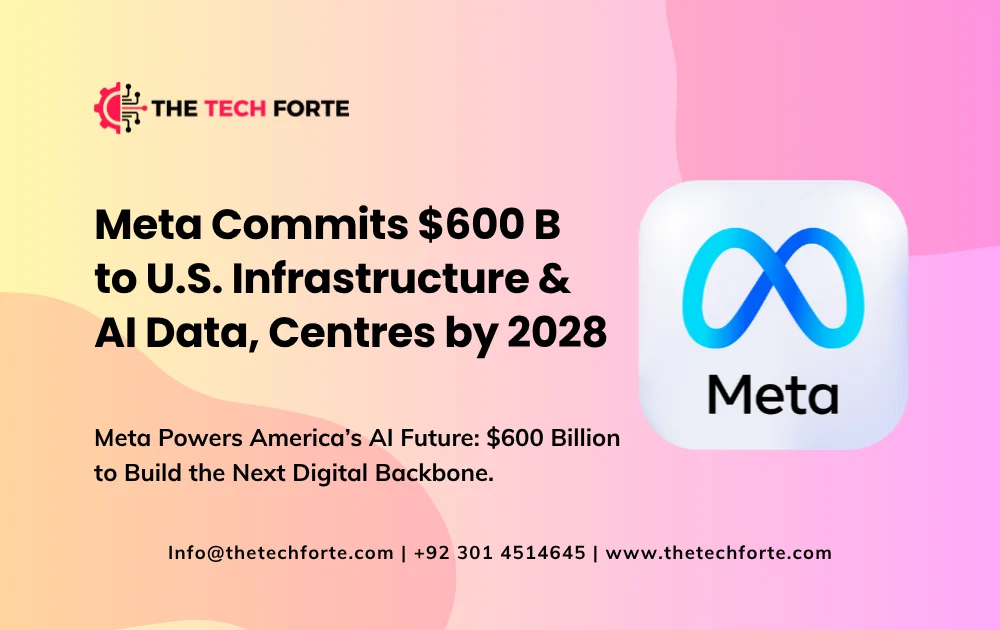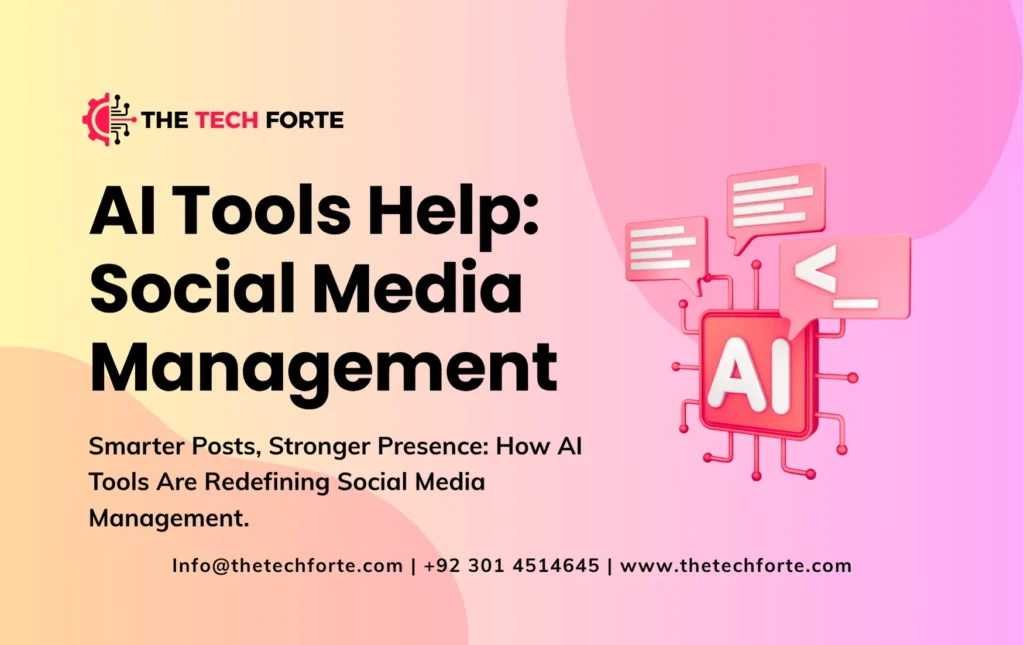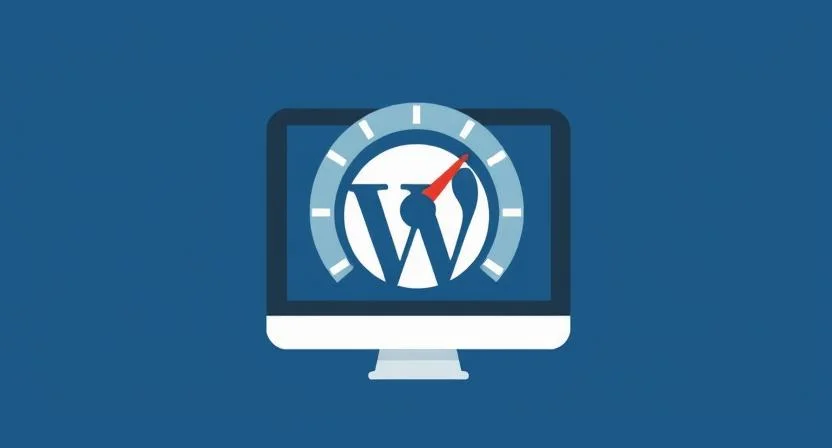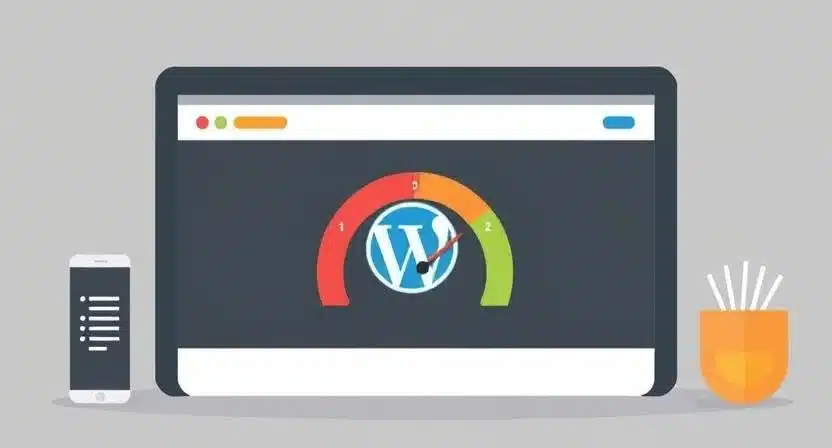Big Tech Lobbying Push Forces EU to Soften AI Regulation: What That Means for U.S. Firms

In November 2025, the European Union appeared to make a startling shift: key provisions of its landmark AI Act, originally hailed as one of the world’s most ambitious AI regulatory frameworks, are now on the chopping block or at least being ‘paused’ for reconsideration. Why? Because Big Tech Lobbying and U.S. governmental pressure have mounted so forcefully that Brussels is responding with proposed delays, grace periods, and softened enforcement. This U-turn has serious implications not just for Europe’s AI sovereignty, but for U.S. AI firms, transatlantic tech competition, and the global future of regulation.
Below, we unpack how this happened, what was on the table, the stakes involved, and what U.S. companies should watch for next.
Recommended Read: EU Considers Delaying Key Sections of the AI Act Under Big Tech Pressure
What’s Happened: A Regulatory About-Face in Brussels
The AI Act and Its Original Ambition
- The EU AI Act, first passed in 2024, aimed to create a tiered risk regulatory regime, distinguishing between banned AI, “high-risk” AI systems (healthcare, transport, critical infrastructure), and general AI.
- It was widely seen as a global model combining safety, rights protections, and innovation guardrails, with phased compliance timelines.
- Many obligations were scheduled for later phases (e.g., “high-risk” compliance in 2026), giving firms some runway to adjust.
Big Tech Lobbying & U.S. Lobbying Heat Up
- U.S. tech giants, including Meta, Alphabet (Google), Apple, and others, amplified pressure on Brussels. They argue that the AI Act’s complexity, cost, and rigid requirements could stifle innovation.
- The Computer & Communications Industry Association (CCIA) Europe, which counts Google, Meta, and Apple among its members, publicly called for a pause, warning that the rollout risks hurting competitiveness.
- On the political front, U.S. government actors reportedly intervened behind the scenes, warning that strict AI rules could lead to transatlantic trade friction.
EU Signals Softening: What Is Being Proposed
According to multiple sources, Brussels is now considering targeted delays and concessions, including:
- A one-year “grace period” for some of the strictest provisions, especially for high-risk systems already on the market.
- Delaying major fines for transparency violations until August 2027, giving firms more runway to comply.
- Simplifying compliance burdens and centralizing enforcement via a dedicated EU AI office to reduce fragmentation.
- A “simplification package” is scheduled for submission on November 19, 2025, according to reports.
The Political and Economic Risk Calculus
- Trade Risk: Some in Brussels fear that aggressive regulation could provoke retaliatory measures from the U.S., especially under hardline political voices.
- Economic Tension: EU leaders are balancing a tough regulatory stance with the economic realities of AI’s value, especially given U.S. dominance in the AI market.
- Regulatory Credibility: Critics warn that rolling back parts of the AI Act could undermine its credibility and weaken protections for citizens.
Why U.S. Big Tech Is Investing Heavily in This Battle
From Silicon Valley to Washington, major U.S. tech firms have strong incentives to shape how Europe regulates AI, and they are deploying both capital and political capital aggressively.
Regulatory Complexity and Compliance Costs
- For AI firms, particularly those offering general-purpose AI (GPAI) systems, the AI Act’s obligations (transparency, risk assessments, conformity checks) represent a significant operational cost.
- Delay or grace periods reduce the risk of non-compliance fines and provide breathing room to adapt business models.
Market Access and Competitiveness
- Europe is a major market. If AI companies are burdened by regulatory requirements, it could slow adoption in the EU and give non-European or less regulated players a competitive edge.
- By influencing the AI Act, U.S. firms preserve their ability to innovate and deploy rapidly, especially in “high-risk” segments.
Geopolitical Leverage
- The U.S. government appears to view AI regulation not just as a tech issue but as a geopolitical one; overly strict regulation in the EU could disadvantage American firms and shift innovation leadership away from the U.S.
- Big Tech’s unity with U.S. policymakers strengthens its leverage in Brussels, giving companies real diplomatic weight.
What Softening the AI Act Means for U.S. Firms
Short-Term Gains: Flexibility & Lower Risk
- Grace periods: High-risk companies get more time to meet compliance. This allows U.S. firms to delay expensive governance upgrades.
- Delayed penalties: Fines for transparency violations aren’t enforced until later, reducing immediate risk.
- Centralized enforcement: A single EU AI office could simplify compliance and reduce administrative costs.
Strategic Advantage: Playing the Long Game
- U.S. AI firms can use this breathing room to scale European operations, build partnerships, and deploy advanced models.
- Lobbying success now sets a precedent: if U.S. firms influence AI regulation in Europe, they may export that playbook to other jurisdictions or help shape global AI governance norms.
Risk Mitigation: Less Regulatory Shock, More Predictability
- By dialing down some of the more stringent or unclear provisions, the EU may reduce the risk of non-compliance litigation or enforcement surprises.
- However, some of the risk is not eliminated but postponed. U.S. firms will still need to plan for full compliance, but with more runway.
Risks for Big Tech if the Loosened AI Act Backfires
While U.S. Big Tech may be celebrating a regulatory reprieve, this lobbying victory carries its own set of risks.
Political Backlash & Loss of Trust
- Delaying AI regulation may spark backlash from European consumer groups, civil society, and human rights advocates who argue that earlier enforcement is critical to protect citizens’ rights.
- Critics may see the policy shift as evidence of undue influence by Big Tech, undermining the legitimacy of the AI Act regime.
Regulatory Uncertainty
- Though changes may be proposed, nothing is yet final. The November 19 simplification package is not guaranteed, and parts of it may be amended or rejected.
- A “pause” or grace period does not mean permanent rollbacks; U.S. companies still face the prospect of full compliance later.
Innovation Trade-Offs
- While delay helps short-term deployment, companies must still build compliance capacity for the long run. Rushing innovation without future-proofing governance may leave them exposed later.
- A softer AI Act could embolden U.S. firms to push for looser rules elsewhere, but that strategy could be met with increasing resistance globally.
Implications for the AI Regulation Landscape
The lobbying showdown is not just about European law; it’s a defining moment in global AI regulation.
The “Brussels Effect” Is Under Pressure
- The AI Act has been viewed as a potential “Brussels Effect” driver in AI: a regulation so influential that global firms adjust to it, even outside the EU.
- Softening the Act may weaken that effect, giving U.S. firms more room to resist European-style AI governance globally.
Precedent for Future Tech Regulation
- This episode could set a pattern: major tech firms (especially U.S.-based) successfully lobbying to dilute rules might encourage similar pressure in other regulatory domains (data privacy, platform liability, etc.).
- On the opposite side, European regulators might double down on enforceable frameworks or seek other instruments (trade policy, digital sovereignty) to constrain Big Tech in other ways.
Regulatory Sandbox Role Gains Prominence
- With compliance delays, regulatory sandboxes environments where AI systems can be tested under supervision may become a more attractive mechanism for innovation.
- The EU has committed to building national AI-sandbox capacity, but capacity, coordination, and provider attractiveness are real challenges.
- If designed well, these sandboxes could become a strategic bridge: allowing firms to test and iterate under regulatory oversight without facing immediate penalties.
What Should U.S. AI Companies Do Now?
Actively Engage, But Plan for the Long Term
- Continue engaging with Brussels and EU agencies, but build compliance roadmaps assuming full enforcement eventually.
- Use the grace period to invest in governance infrastructure: risk assessments, transparency mechanisms, and documentation processes.
Leverage the Uncertainty to Innovate
- Pilot AI systems under the regulatory “pause” or lighter obligations, particularly high-risk systems, to refine models while minimizing compliance risk.
- Consider partnerships with European firms (startups, research institutions) to co-develop regulated AI systems that comply with both EU and U.S. norms.
Prepare for Global Regulatory Spread
- Use this moment to influence not just European regulation but global norms: how you design AI infrastructure, governance, and transparency today may influence rule-making in other regions.
- Invest in sandbox-friendly models and demonstrate compliance capability: this could help position your firm as a trusted partner for future regulation.
Conclusion: A Tactical Retreat, or Strategic Reset?
Big Tech’s lobbying push appears to be paying off: Brussels is seriously considering softening parts of the AI Act, delaying its enforcement, and offering companies more time to comply. For U.S. firms, that’s a tactical victory, more room to breathe, more time to adapt.
But this is not a permanent win. The EU’s core ambition to regulate powerful AI in the service of safety, rights, and innovation has not been abandoned. The simplification package may ease pressure, but the law is not going away.
For U.S. companies, the moment calls for a dual strategy: engage and exploit the temporary relief, while building long-term governance resilience. Success will come to those who don’t just pause to catch their breath, but use that time to build compliance-forward, innovation-enabled AI ecosystems.





